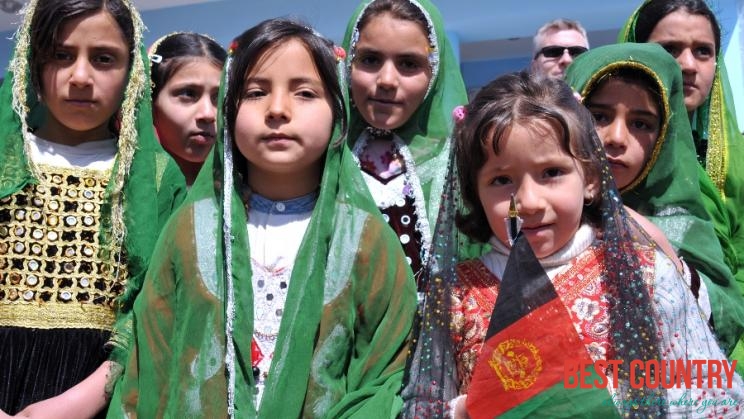Afghanistan Population | It has a population of around 4.6 million residents. The current population of afghanistan in 2021 is 39,835,428, a 2.33% increase from 2020.; The current population of afghanistan is 39,902,701 as of saturday, august 14, 2021, based on worldometer elaboration of the latest united nations data.; Demographic statistics, ( 4 ) united nations statistical division. ( 1 ) united nations population division. The shia in afghanistan consist mostly of the hazara ethnic group, which totalled almost 10% of afghanistan's population and were persecuted during taliban rule. Under the taliban governance of afghanistan, both drug users and dealers were severely prosecuted. Jun 24, 2021 · afghanistan encyclopædia britannica, inc. Kabul is the capital and largest city, and is located along the kabul river south of the hindu kush mountain range. As you would expect, there is a diverse range of ethnic groups within the country. Due to mountainous geography, country relies on its mobile network; Afghanistan 2020 population is estimated at 38,928,346 people at mid year according to un data.; The capital of afghanistan is its largest city, kabul. ( 1 ) united nations population division. Afghanistan population is equivalent to 0.5% of the total world population.; Chart and table of afghanistan population from 1950 to 2021. United nations projections are also included through the year 2100. The current population of afghanistan in 2021 is 39,835,428, a 2.33% increase from 2020.; Jun 24, 2021 · afghanistan encyclopædia britannica, inc. Operator launched lte in kabul. It has a population of around 4.6 million residents. Afghanistan, officially the islamic republic of afghanistan, is a mountainous landlocked country at the crossroads of central and south asia. The taliban emphasised dreams as a means of revelation. United nations projections are also included through the year 2100. Under the taliban governance of afghanistan, both drug users and dealers were severely prosecuted. Afghanistan population is equivalent to 0.5% of the total world population.; The taliban emphasised dreams as a means of revelation. It has a population of around 4.6 million residents. The population of afghanistan in 2019 was 38,041,754, a 2.34% increase from 2018. Afghanistan population is equivalent to 0.5% of the total world population.; United nations projections are also included through the year 2100. This means that there are only few major cities in the country, and these are widely spaced apart. As you would expect, there is a diverse range of ethnic groups within the country. Under the taliban governance of afghanistan, both drug users and dealers were severely prosecuted. Jul 20, 2021 · despite decades of war, afghanistan has successfully rebuilt infrastructure to create a functional telecom sector that covers nearly all of the population; Afghanistan, officially the islamic republic of afghanistan, is a mountainous landlocked country at the crossroads of central and south asia. It has a population of around 4.6 million residents. Afghanistan is a large and mountainous, although mainly rural, country. The current population of afghanistan is 39,902,701 as of saturday, august 14, 2021, based on worldometer elaboration of the latest united nations data.; The shia in afghanistan consist mostly of the hazara ethnic group, which totalled almost 10% of afghanistan's population and were persecuted during taliban rule. Afghanistan ranks number 37 in the list of countries (and. The population of afghanistan in 2020 was 38,928,346, a 2.33% increase from 2019.; Afghanistan ranks number 37 in the list of countries (and. The capital of afghanistan is its largest city, kabul. Afghanistan 2020 population is estimated at 38,928,346 people at mid year according to un data.; ( 2 ) census reports and other statistical publications from national statistical offices, ( 3 ) eurostat: Afghanistan ranks number 37 in the list of countries (and. The population of afghanistan is around 37,466,414 as of 2021, which includes the roughly 3 million afghan citizens living as refugees in both pakistan and iran. Afghanistan 2020 population is estimated at 38,928,346 people at mid year according to un data.; As you would expect, there is a diverse range of ethnic groups within the country. Due to mountainous geography, country relies on its mobile network; The population of afghanistan in 2020 was 38,928,346, a 2.33% increase from 2019.; The shia in afghanistan consist mostly of the hazara ethnic group, which totalled almost 10% of afghanistan's population and were persecuted during taliban rule. The population of afghanistan in 2019 was 38,041,754, a 2.34% increase from 2018. Of the 31 million or so afghan residents, 42% are pashtun, 27% tajik, 9% hazara, 9% uzbek, 4% aimak, 3% turkmen, 2% baloch and 4% fall into an unspecified other group. The capital of afghanistan is its largest city, kabul. Since its inception in 1995, the multiple indicator cluster surveys, known as mics, has become the largest source of statistically sound and internationally comparable data on women and children worldwide. The current population of afghanistan in 2021 is 39,835,428, a 2.33% increase from 2020.; The current population of afghanistan is 39,902,701 as of saturday, august 14, 2021, based on worldometer elaboration of the latest united nations data.;

Afghanistan Population: The current population of afghanistan in 2021 is 39,835,428, a 2.33% increase from 2020.;


EmoticonEmoticon